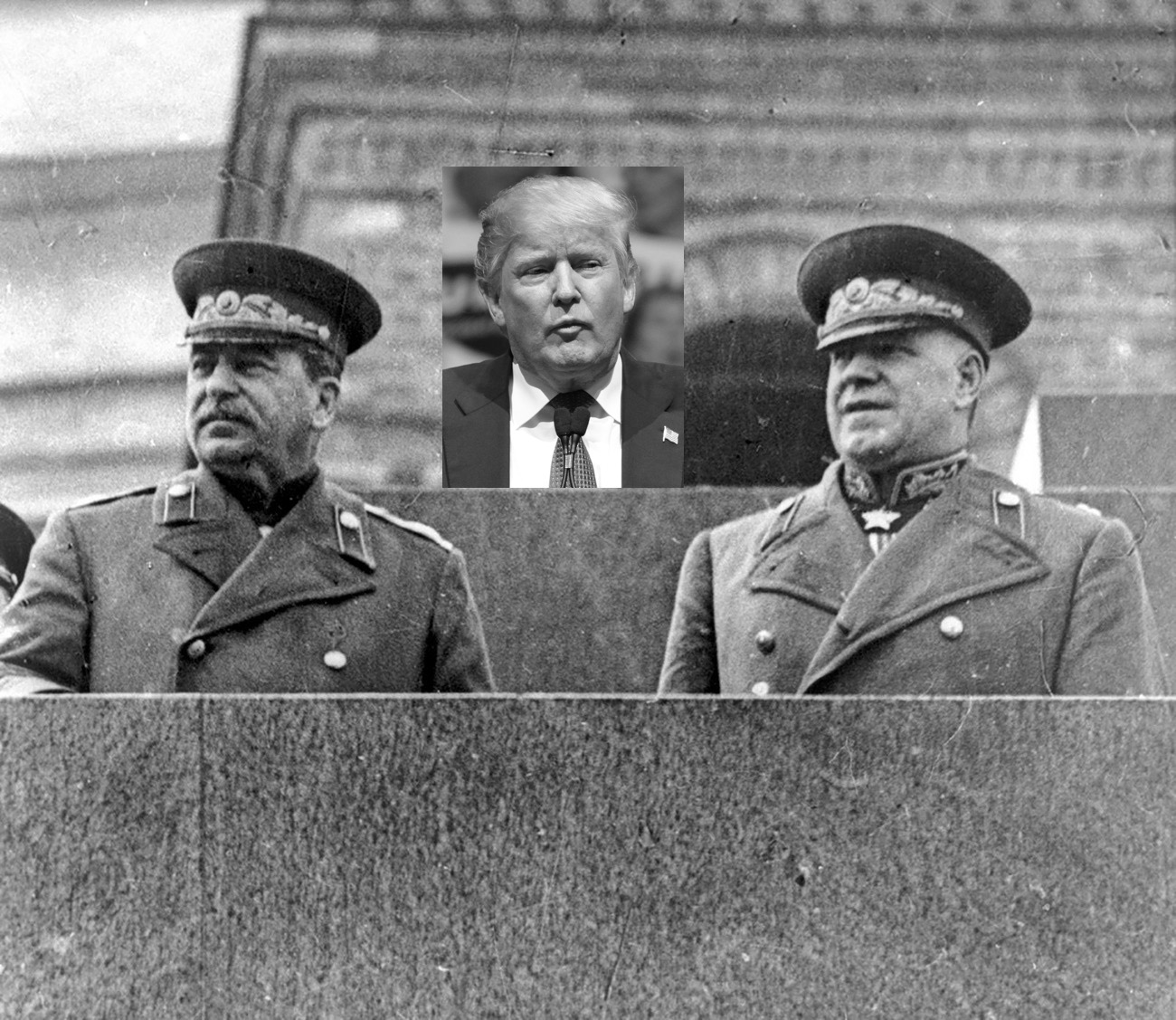FEBRUARY 17, 2021 – Last December I watched a Russian TV series entitled Zhukov, the famous Red Army general who led Soviet forces to victory in WW II. Everything about the (Star Media) production—except the subtitling—was superb. (With a little imagination an Anglophone can interpret the fractured English.) Casting, acting, direction, cinematography, soundtrack—including whole-cloth musical performances integrated into the series—and costuming and set design were magnificent; the story, riveting.
At the close of WW II, General Georgy Zhukov was an immensely popular figure—a dangerous circumstance, given that his boss was Stalin. Yet Zhukov was a survivor. His amazing career—built on loyalty to his troops, sharp intelligence, and dogged determination—took him (of peasant stock) from conscription into the Tsar’s army before the revolution to the pinnacle of post-revolutionary power in the Red Army, with a tour into exile now and again. Though on the surface he was a stoic soldier, underneath he was a romantic to a fault and possessed ample intellectual proclivities. Plus, he has a refined ear for poetry and music.
The series follows the hero’s career after “The Great Patriotic War,” which catapulted Zhukov to fame. Pitted against Lavrentiy Beria, Stalin’s head of state security, Zhukov dodged the fate of characters with lesser abilities. Following Stalin’s death, Zhukov again survived Kremlin politics by maneuvering in support of Khrushchev, and years later, in backing Brezhnev when the latter ousted Khrushchev. Yet Zhukov’s career ended in demotion, which, given Soviet standards, was better than internal exile, “camp life,” or a firing squad. He died of natural causes in 1974.
The most fascinating aspect of the series was its expansive depiction of Stalin. The actor who played the role of Lenin’s successor looked the part to a “T” and in word and gesture, projected the essence of “The Man of Steel”—the power of Stalin’s personality.
As many of us Americans still puzzle over Trump’s enduring popularity, the cult of Stalin offers an apt comparison. I encountered Stalin years ago while traveling in the USSR. I naively assumed that by then (1981), Stalin, whose rule led to the untimely death or cruel imprisonment of 10s of millions, was persona non gratis among Russians as Hitler was among Germans. But one day I boarded a city bus in Irkutsk in eastern Siberia. As I turned toward the front and took my seat, my lower jaw dropped. On prominent display within a gilded frame just above the windshield was the portrait of . . . Josef Stalin.
Years later back home, at a neighbor’s reception for Ukrainian visitors participating in an “American-Ukraine Friendship Exchange,” I spoke with an older woman who’d come of age during Stalin’s rule. When I asked her about my encounter with Stalin’s image in Siberia and how in the world—or at least in the USSR of 1981—that could be, she launched into an enthusiastic embrace of the tyrant. I was dumbfounded.
I’m now far more familiar with the unrelenting grip of a personality cult. Call it “understanding Stalin.”
(Remember to subscribe to this blog and receive notifications of new posts by email.)
© 2021 by Eric Nilsson
